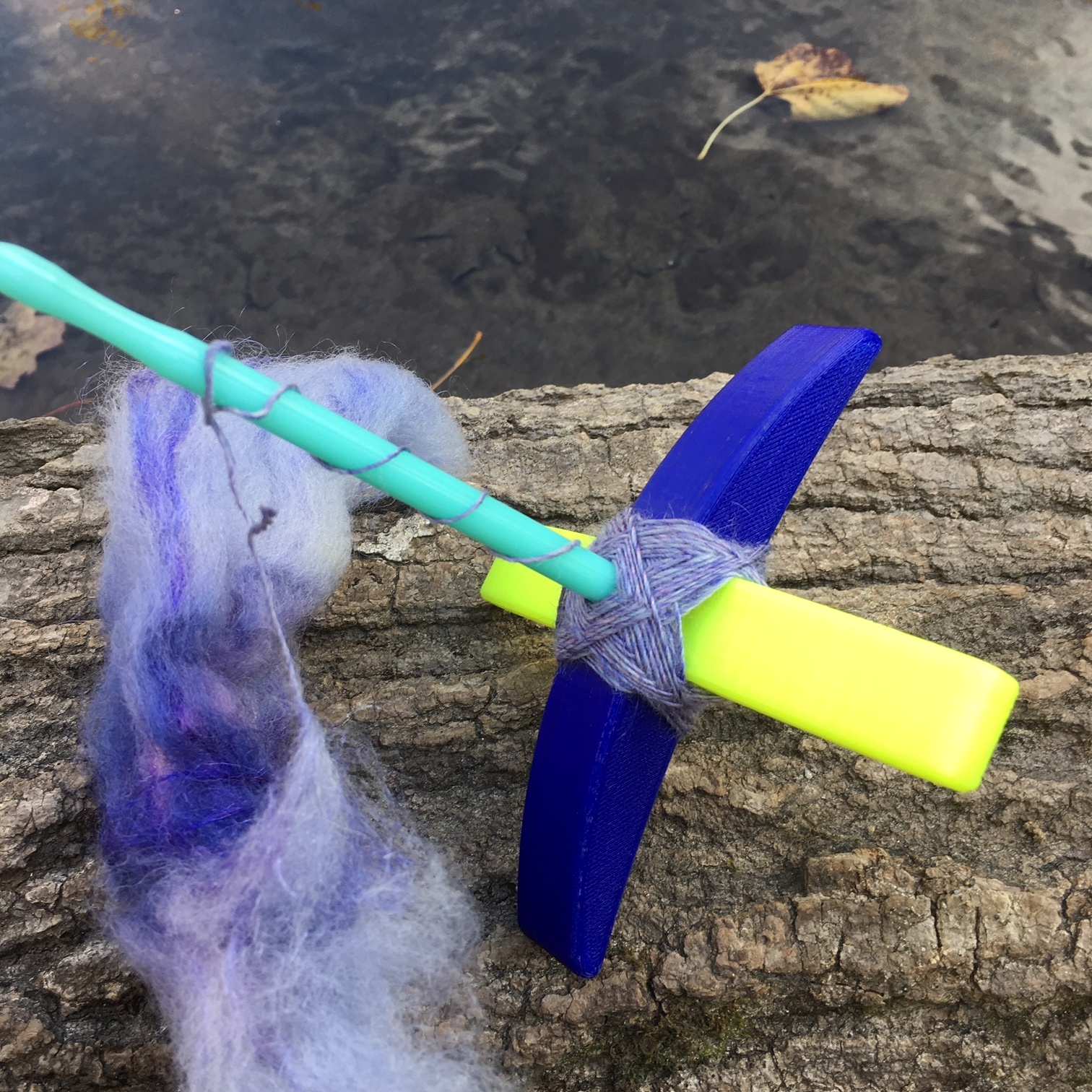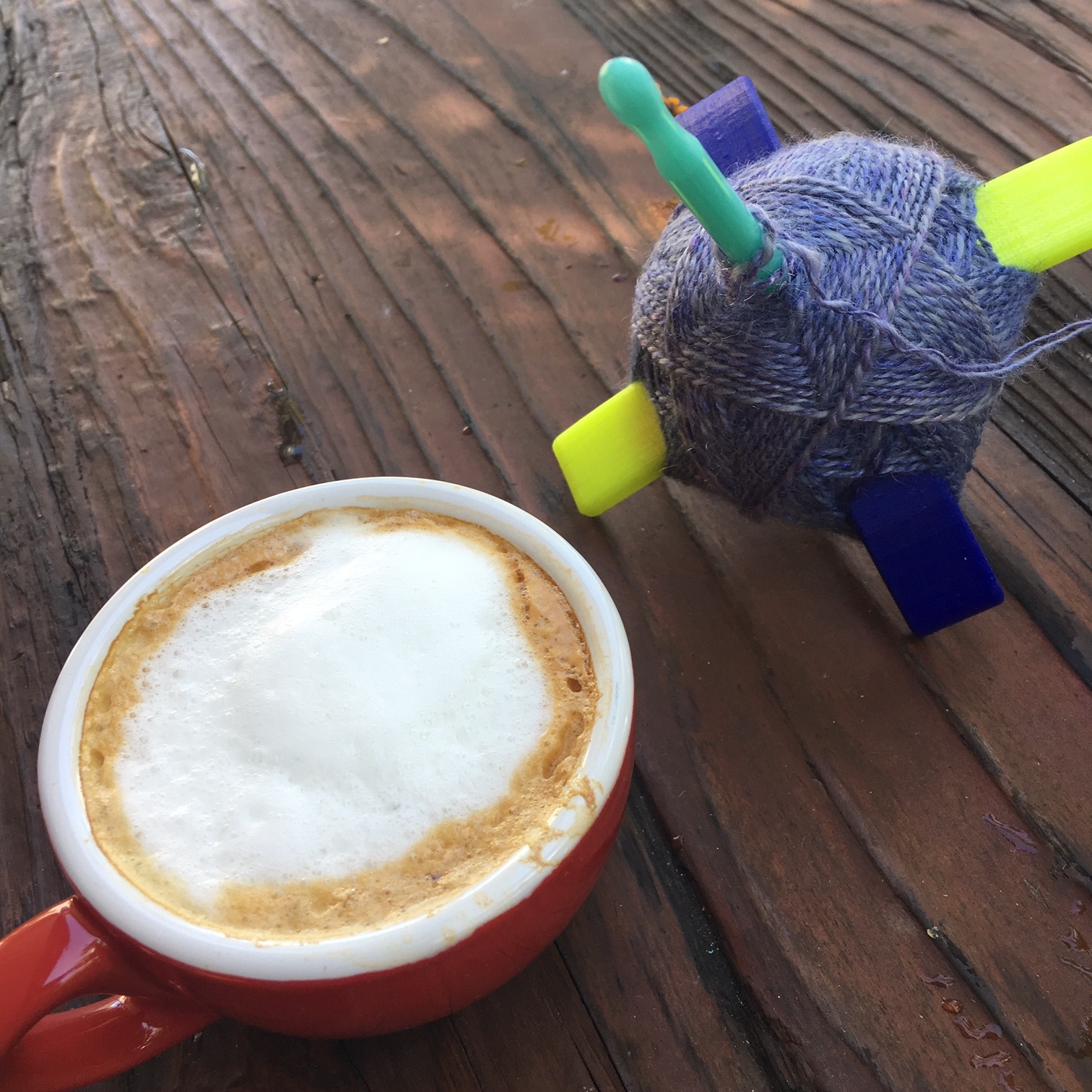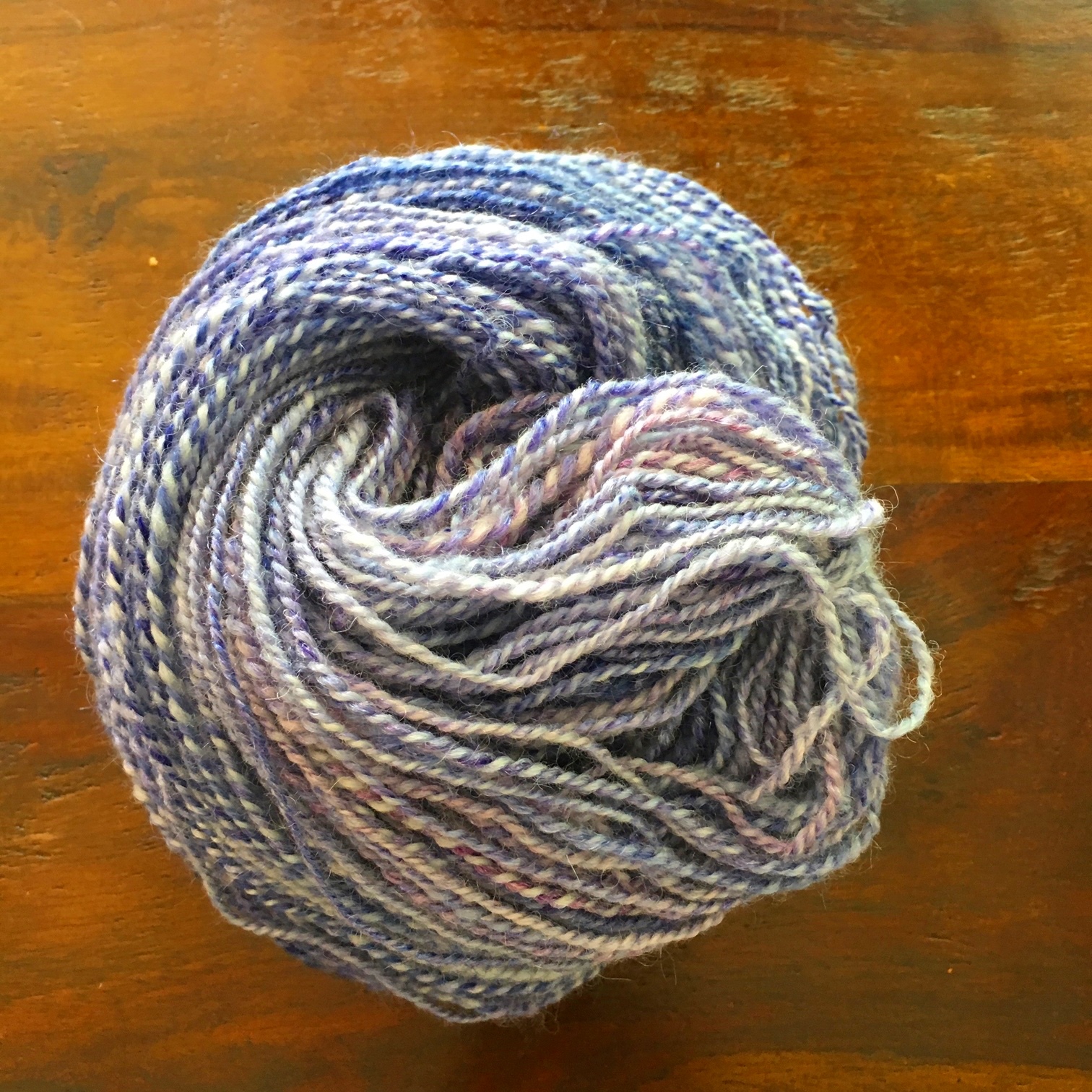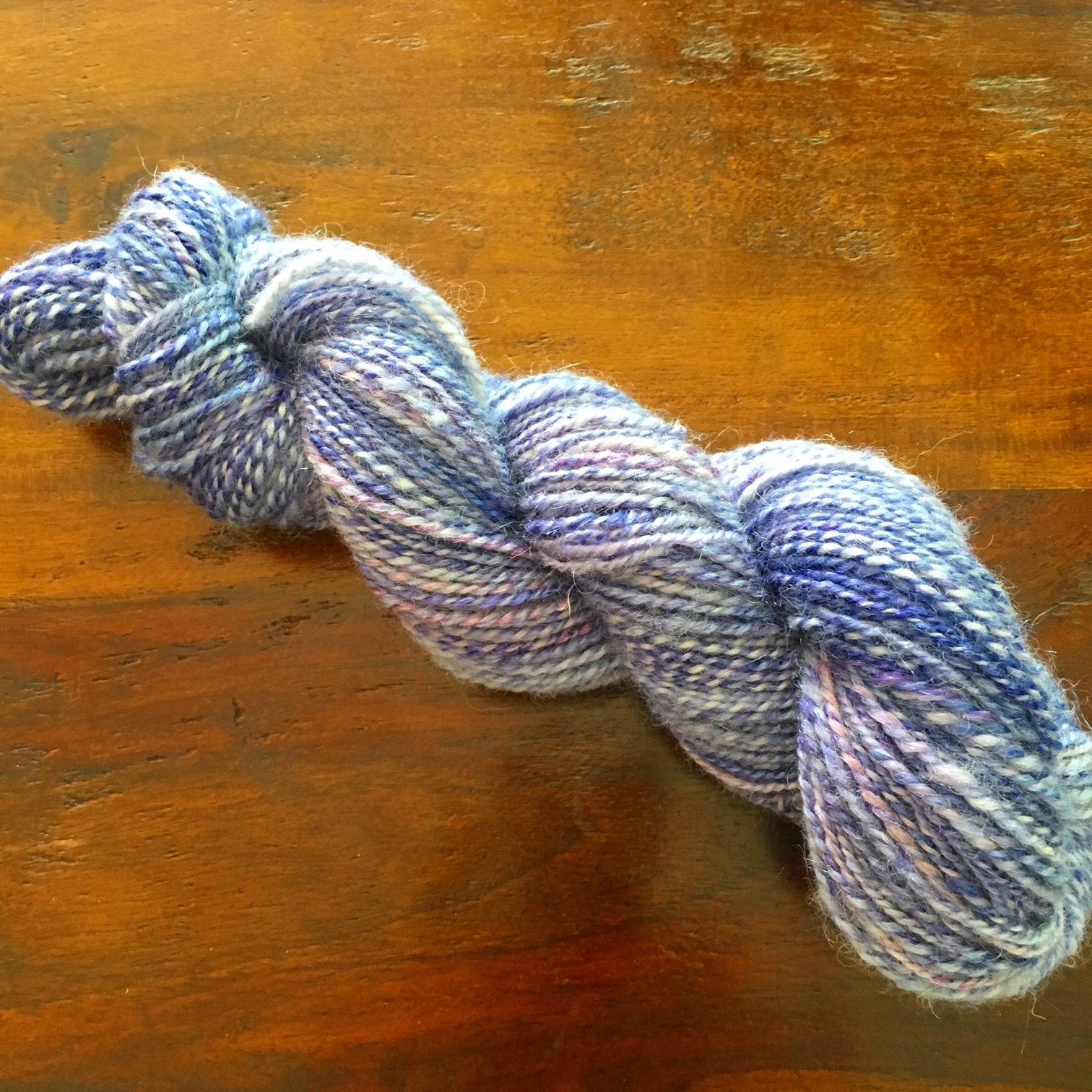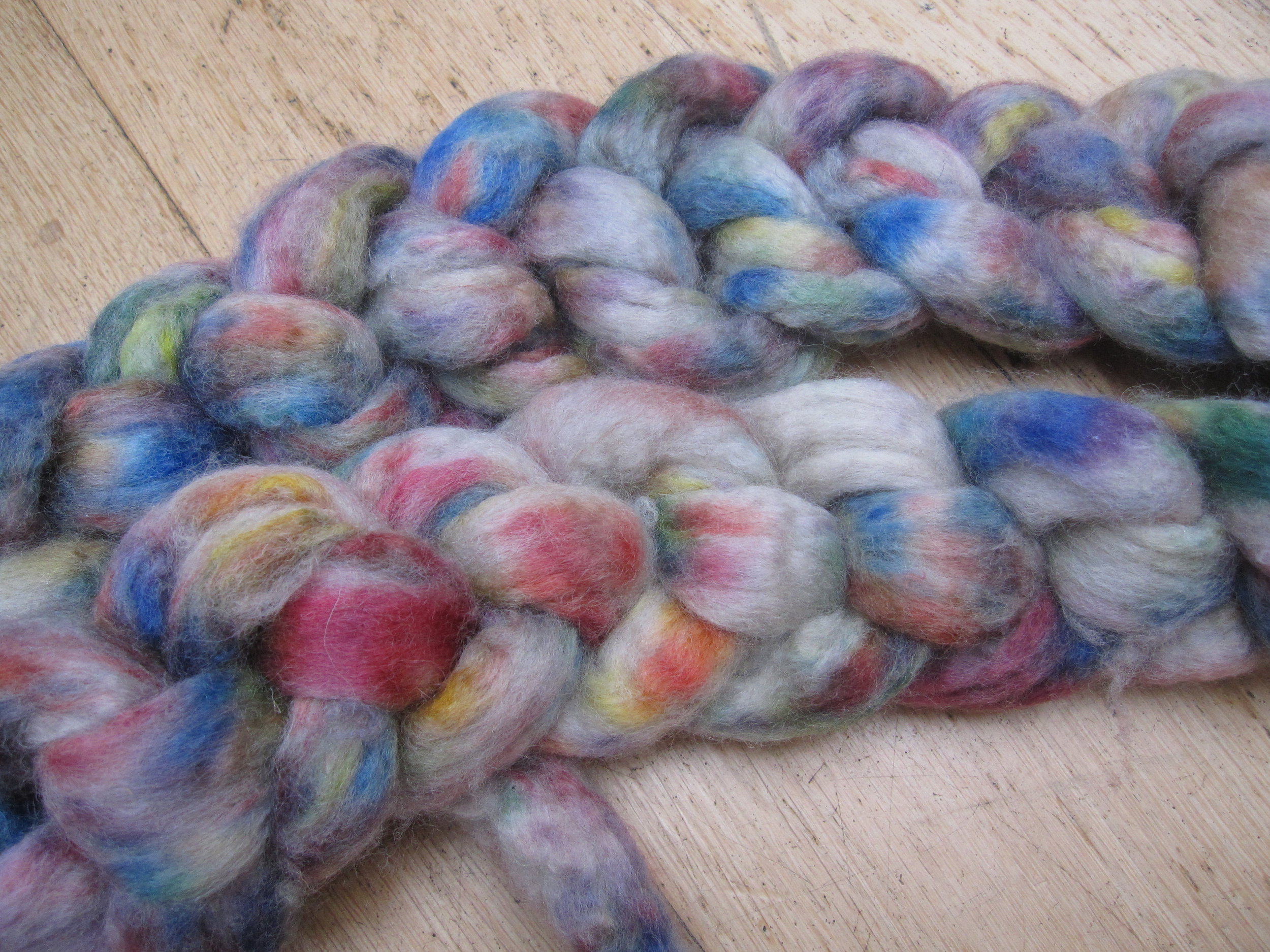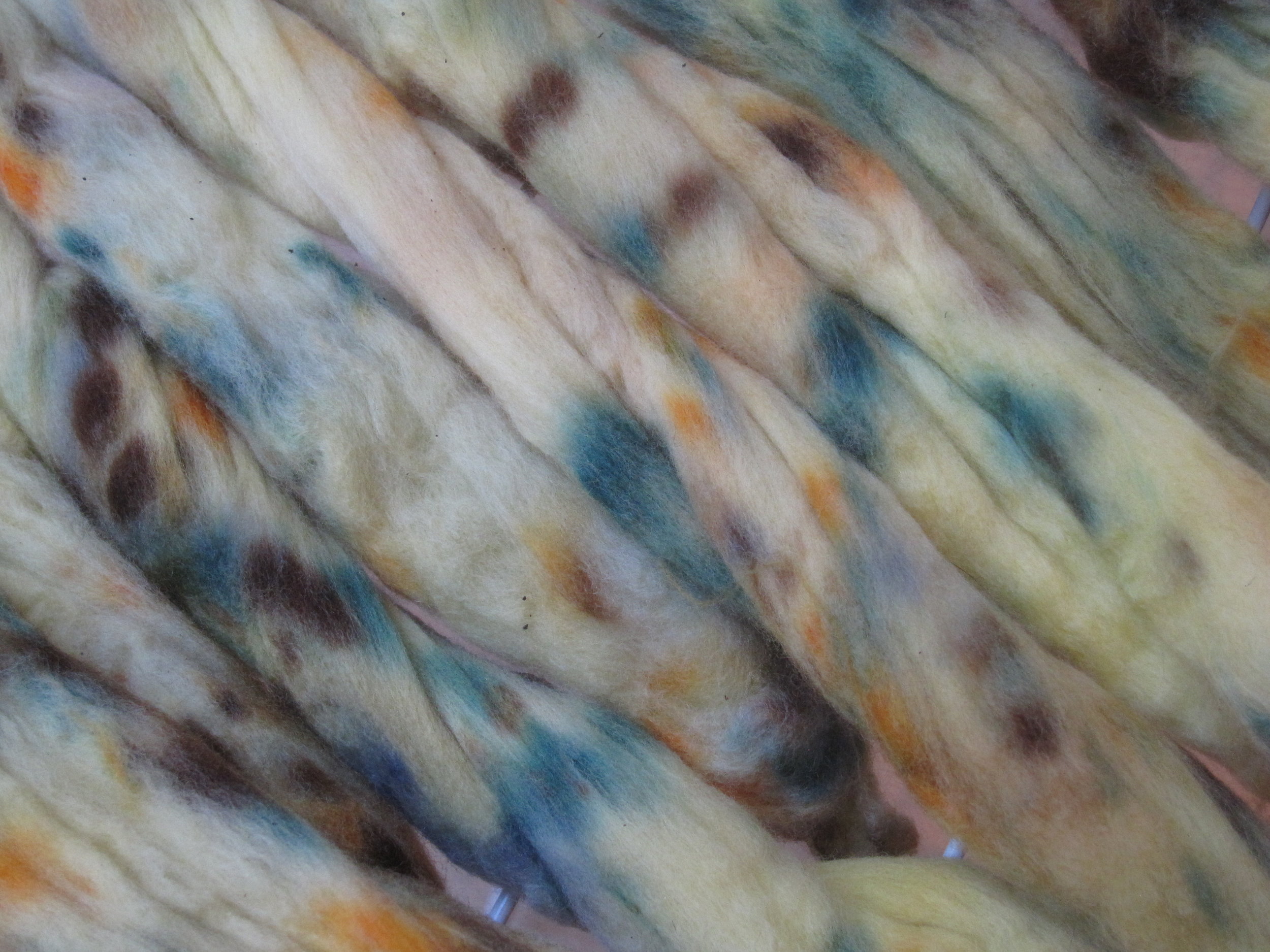Back to the spindle
The last few months have been (as you might imagine) a bit of a whirlwind. My stash and I are currently on opposite sides of the world (both the small stash in Maine and the larger stash in the UK), and it’s currently 35 degrees C where I am, so there is a conspicuous lack of holiday crafting going on.
What I have had with me in the last couple of months is my lovely 3D printed Turtlemade spindle (a gift from Alli via Cat & Sparrow) and a bit of Porpoise Fur fibre that had been languishing in the unsold stock pile for quite a while.
The fibre is 70% Bluefaced Leicester/30% trilobial nylon. It spins like straight BFL, but the nylon adds some sparkle in interesting ways - it isn’t a fully mixed blend, so there are streaks of nylon in the top that shine, a bit like a silk blend.
So over the past two months I’ve slowly worked away at this 100 g, and this week I finished the singles and the plying! I managed to fit all the singles onto my not-very-large spindle in a monster cop,
wound off on an improvised niddy noddy,
and ended up with 164 yd/150 m of lovely, perfectly balanced (!), DK to sport weight yarn.
It is very well timed that I’ve finished this yarn now, as I’m about to head off to Cairns which has a dearth of yarn shops. Now I have something to knit with, the question becomes what to make with it? Suggestions welcome!

